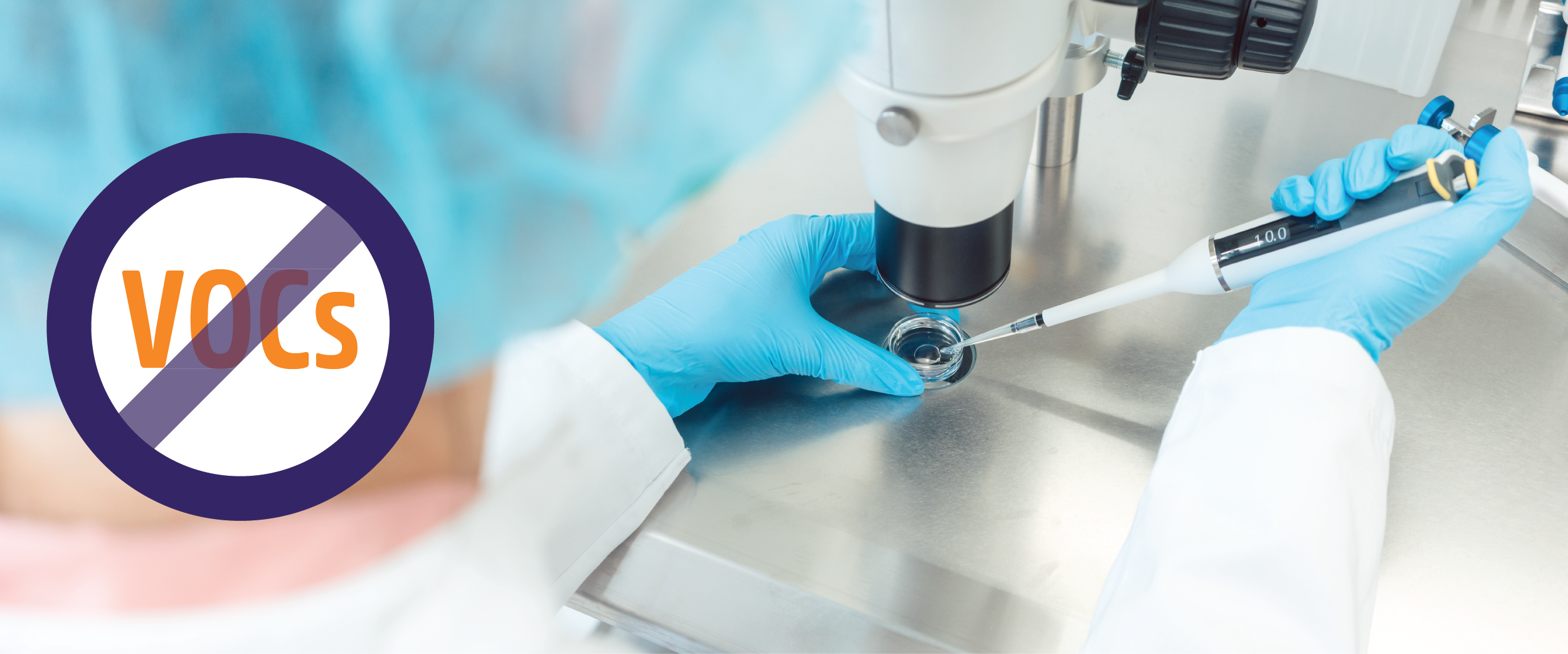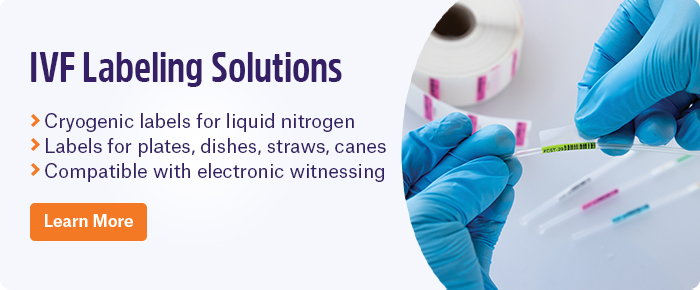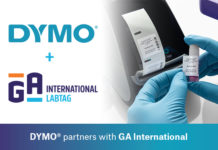 In vitro fertilization (IVF) is a common technique utilized by assisted reproductive technology (ART) facilities to fertilize donor eggs, and implant them back into the mother. In addition to performing IVF, these clinics frequently store eggs, sperm, and embryos. Unfortunately, manipulating these cells outside of the human body means they are exposed to many types of airborne pollutants, including volatile organic compounds (VOCs). Though embryos are considered extremely adaptable cells, exposure to VOCs can induce changes in gene expression and regulation, including imprinting and epigenetic alterations, which may affect the outcome of IVF procedures.
In vitro fertilization (IVF) is a common technique utilized by assisted reproductive technology (ART) facilities to fertilize donor eggs, and implant them back into the mother. In addition to performing IVF, these clinics frequently store eggs, sperm, and embryos. Unfortunately, manipulating these cells outside of the human body means they are exposed to many types of airborne pollutants, including volatile organic compounds (VOCs). Though embryos are considered extremely adaptable cells, exposure to VOCs can induce changes in gene expression and regulation, including imprinting and epigenetic alterations, which may affect the outcome of IVF procedures.
VOCs in the lab
VOCs, such as aldehydes and alcohols are commonly found in IVF labs, this includes ethanol, isopropanol, formaldehyde, acetaldehyde, acetonitrile, acetone, d-limonene, and α-pinene. As such, there are several steps that need to be considered when devising a strategy to keep VOC levels as low as possible in IVF labs:1
- HEPA and CODA filters – The bulk of airborne contaminants that enter the lab can be removed using high-efficiency particulate air (HEPA) filtration. These filters will remove anything as small as 0.3 microns. Carbon-activated air filtration (CODA) systems can be used alongside HEPA filters to remove hydrocarbons from incubators, gas lines, and all working environments.2
2. Room segmentation – Separating the airflow of the IVF lab from the clinical procedure room with double-door gasketed pass-through windows maintains the positive pressure needed for proper air filtration and prevents the passage of VOCs from one room to another. Separating all other rooms (e.g. gas cylinder room, storage rooms, office, and diagnostic rooms) from the IVF lab is also necessary to prevent contamination.
3. Use VOC-free paints –Paints may contain formaldehyde, but if the concentration is less than 0.1% to 1%, depending on the manufacturer, then it may not be listed as an ingredient in the mixture. It’s best to use paints that are guaranteed to be VOC-free, without the addition of pigment at the point-of-sale.
4. Furniture – Wood furniture may contain binders that emit formaldehyde into the air, while varnished, shellacked, or painted furniture can also be a source of VOCs. In an IVF lab, steel furniture washed beforehand with isopropanol and off-gassed (i.e. aired out for several days in a separate room), is the superior solution as it releases a lower concentration of VOCs. If the furniture requires greasing, a silicone-based lubricant should be employed.
5. Off-gas plasticware before use – Most plasticware, like Petri dishes and pipette tips, is made of polystyrene, which can release styrene, a potentially harmful VOC. Allowing plasticware to off-gas is necessary to prevent styrene from contaminating embryo cultures. To do this, open the sleeves of the plasticware and let it vent in a room other than the lab, preferably in a laminar flow hood.
6. Incubator setup and maintenance – Keeping your incubators VOC-free is critical, as a contaminated incubator can affect every single embryo culture. Like plasticware, incubators should be off-gassed and any repairs or servicing should be performed with low-VOC and/or off-gassed products as well. To decrease the overall levels of VOCs running through the incubators on a daily basis, in-line filters between the gas tank and the incubator as well as VOC-free gases should be used. Employing incubators that can flush out ambient air from the incubator and replace it with gases from the tanks also ensures the only source of VOC contamination is limited to the tanks or in-line filters and not the lab environment.
7. Use VOC-free labels – Labels represent another possible source of VOCs that often goes unaccounted for. When purchasing labels for your cryo straws, canes, boxes, and other lab equipment, make sure they’ve been tested for VOCs. Testing is usually performed by the manufacturer, so it makes sense to purchase labels from the source rather than through a secondary distributor.
8. Don’t use cigarettes, cosmetics, perfume, or cologne – All four of these products emit significant amounts of VOCs. Even residual smoke exiting the lungs can potentially release enough VOCs to affect the embryos. As such, it’s recommended that an IVF lab be smoke-, cosmetic-, perfume-, and cologne-free.
9. VOC-free cleaning products –Though ethanol is the disinfectant of choice in most labs, it is considered a potent VOC and embryo toxin. Chemicals that can be used in place of ethanol include diluted sodium hypochlorite solution (bleach), hydrogen peroxide, and the commercially-available Oosafe®.3
10. Monitor VOC levels– Most VOCs can be detected by gas chromatography or gas chromatography mass spectrometry. Photoionization detectors can be used to get a general sense of the level of VOCs in the lab; however, they can’t distinguish between VOCs, making it hard to pinpoint the source of contamination.
Reducing VOCs leads to better outcomes
Two cases were published, one in 2013 and another in 2017, showing that the clinical assessments related to IVF, such as the rates of fertilization, embryo cleavage, blastocyst formation, and pregnancy, could be improved by implementing these strategies. Khoudja et al (2013) added stringent air filtration systems to their IVF lab and observed significant increases in all four IVF-related parameters.2 Agarwal et al (2017) went even further, switching out wood-based furniture with steel, PVC flooring with epoxy paints, and alcohol with Oosafe®. Furthermore, they banned workers from smoking or wearing perfume, cologne, or cosmetics inside the lab and avoided aerosol/ammonia-based cleaners. Double-shield glass was also installed to make the rooms airtight, preventing VOCs found outside the facility from contaminating the rooms. By remodeling their lab, they increased their blastocyst formation rate by 18%, their rate of clinically successful pregnancies by 10%, and their rate of live births by 8%.3
Ensuring that all procedures performed in the IVF lab are up to the highest standards of quality and safety is a top priority. It’s critical to make sure embryos, sperm, and eggs are all maintained in an environment absent of VOCs. With costs as high as $12,000 for just one cycle of IVF and a live birth rate well below 50%, keeping a VOC-free lab means an increased likelihood that all the money and stress eventually pays off.2,3
LabTAG by GA International is a leading manufacturer of high-performance specialty labels and a supplier of identification solutions used in research and medical labs as well as healthcare institutions.
References:
- Mortimer D, Cohen J, Mortimer ST, et al. Cairo consensus on the IVF laboratory environment and air quality: report of an expert meeting. Reprod Biomed Online. 2018;36(6):658-674.
- Khoudja RY, Xu Y, Li T, Zhou C. Better IVF outcomes following improvements in laboratory air quality. J Assist Reprod Genet. 2013;30(1):69-76.
- Agarwal N, Chattopadhyay R, Ghosh S, Bhoumik A, Goswami SK, Chakravarty B. Volatile organic compounds and good laboratory practices in the in vitro fertilization laboratory: the important parameters for successful outcome in extended culture. J Assist Reprod Genet. 2017;34(8):999-1006.



